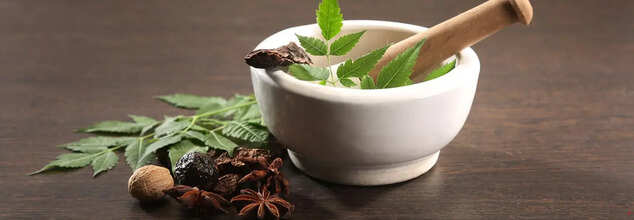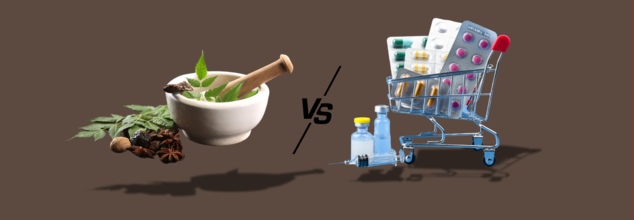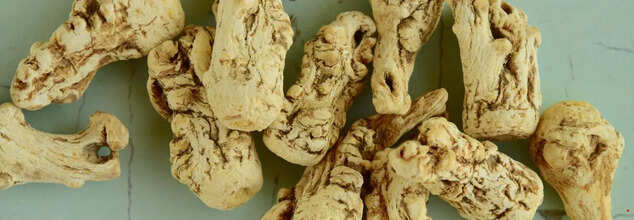
Credit: Canva
Ayurvedic Foods That Naturally Unclog Arteries
Imagine a silent enemy slowly narrowing the roads inside your body, making it harder for your heart to pump blood. That’s what clogged arteries do—putting you at risk of heart disease, strokes, and high blood pressure. But what if nature had already provided us with powerful tools to fight back? Ayurveda, India’s ancient system of medicine, offers time-tested foods that may help keep your arteries clear and your heart healthy.
Here’s a look at some of the best Ayurvedic remedies for arterial health.
1. Triphala: The Detoxifying Trio
Triphala, a blend of three potent fruits—Amla, Bibhitaki, and Haritaki—is known for its detoxifying properties. This combination works like a natural cleanser, helping remove toxins, reduce cholesterol buildup, and improve blood circulation. Studies suggest that its antioxidant-rich profile fights oxidative stress, a major contributor to plaque formation in arteries.
2. Garlic: The Natural Blood Thinner
A simple kitchen ingredient with remarkable health benefits, garlic is revered in Ayurveda for its ability to improve heart health. It contains allicin, a compound known to lower bad cholesterol (LDL) and prevent arterial plaque formation. Regular consumption of raw garlic or its extracts may help in reducing blood pressure and improving overall circulation.
3. Turmeric: The Golden Healer
Turmeric is famous for its anti-inflammatory and antioxidant properties, thanks to curcumin, its active compound. Research suggests that curcumin can reduce fatty deposits in the arteries and improve endothelial function (the lining of blood vessels), keeping them flexible and free from blockages. Adding a pinch of turmeric to warm milk or tea can be a simple yet effective way to support heart health.
4. Arjuna Bark: Ayurveda’s Heart Tonic
Arjuna bark has been used for centuries as a natural heart protector. Rich in antioxidants and flavonoids, it strengthens the heart muscles, regulates blood pressure, and prevents plaque buildup in arteries. Traditionally, Arjuna bark is boiled into a decoction or taken as a supplement to support cardiovascular function.
5. Ginger: The Blood Circulation Booster
Ginger is another household ingredient that works wonders for arterial health. It contains gingerol, a bioactive compound that helps reduce inflammation and lower cholesterol levels. Regular consumption of ginger tea or raw ginger may prevent fat from accumulating in the arteries, improving overall heart health.
6. Ashwagandha: The Stress Reliever
Chronic stress can contribute to high cholesterol and hypertension, worsening arterial blockages. Ashwagandha, an adaptogenic herb, helps reduce cortisol levels (the stress hormone), indirectly supporting heart health. It also improves circulation and may lower blood pressure, making it a valuable addition to your routine.
7. Guggul: The Ayurvedic Cholesterol Fighter
Guggul, derived from the resin of the Commiphora mukul tree, has been a staple in Ayurvedic heart care for centuries. It is known to reduce bad cholesterol (LDL) while boosting good cholesterol (HDL). Modern research supports its role in preventing plaque formation and improving lipid metabolism.

Credit: Canva
These 3 Ayurvedic Herbs Can Help You Protect Your Skin From Heat
Tanning, dryness, and sunburn—when summer hits hard, your skin often takes the biggest blow. Whether it's sunburn from a day outdoors or stubborn tanning after just a few minutes in the sun, the effects can linger and frustrate. Most people rush to grab chemical-based lotions and quick-fix products. While these might offer temporary relief, they often come at the cost of long-term skin health and may even cause damage over time.
But what if the solution isn’t on the store shelves but in your kitchen? Ayurveda has long relied on herbs that calm the body, balance the Pitta dosha (which governs heat), and protect the skin from sun damage, inflammation, and dryness. Pitta is described as hot, sharp, oily, and penetrating. When fiery Pitta flares up–we burn up and burn out. That's why reducing body heat with Ayurveda starts with reducing Pitta dosha.
Signs of Pitta Imbalance
Pitta heat manifests in many ways, including:
- Inflammation
- Skin conditions
- Migraines
- Acid reflux
- Loose stools
- Nausea
- Constipation
- Body odor
- Excessive sweating
- Unpleasant menstrual cycles
- Burnout and fatigue
- Mental heat (think short-fuses and irritability)
3 Ayurvedic Herbs Hold Solution To These Problems
1. Liquorice (Mulethi): The Brightening HealerStruggling with sunburn and dark spots? Liquorice, or Mulethi, is your skin’s natural ally against harsh summer damage. This powerful Ayurvedic herb is known for its cooling, anti-inflammatory, and antioxidant properties. It helps balance the Pitta dosha, which governs heat in the body and is often responsible for summer skin issues like tanning, rashes, and irritation.
Liquorice works on multiple levels—topically, it soothes inflamed skin and fades pigmentation, while internally, it supports hormonal balance and detoxification. The presence of glabridin, a natural compound found in liquorice root, helps inhibit the enzyme that causes skin darkening, making it highly effective for lightening sun-induced spots and hyperpigmentation.
You can apply liquorice powder mixed with rose water as a face mask or sip it as a herbal infusion. Regular use not only restores your skin’s glow but also builds resistance against further sun damage, making it a must-have for your summer skincare arsenal.
2. Sariva (Anantmool): The Detoxifying Soother
Sariva, also known as Anantmool, is a revered herb in Ayurveda for its profound detoxifying, cooling, and rejuvenating effects on the body and skin. Especially effective in summer, Sariva helps purify the blood, calm inflammation, and cool down the internal system, which is crucial when Pitta dosha is aggravated by heat and humidity.
This herb is a saviour for those suffering from acne, rashes, or frequent skin breakouts, as it helps eliminate toxins from the bloodstream that often manifest as skin problems. Sariva also has a naturally sweet and earthy aroma that promotes calmness and relaxation—benefits that extend to the skin by reducing stress-induced flare-ups.
You can consume Sariva in powdered or decoction form or apply it as a paste on affected areas. It also pairs well with other herbs like neem and turmeric for enhanced results. With regular use, it leaves your skin noticeably clearer, calmer, and visibly refreshed.
3. Vetiver (Ushira): Nature’s Skin Cooler
Vetiver, or Ushira, is a hidden gem in Ayurvedic skincare and an excellent remedy for heat-related skin problems. Often referred to as "khus" in India, Vetiver is packed with cooling, anti-inflammatory, and hydrating properties that make it ideal for summer wellness. It helps reduce excessive body heat, soothes sunburn, and fights skin irritation caused by overexposure to the sun.
Vetiver is also a natural astringent that tightens the skin and prevents breakouts, while its hydrating effect tackles summer dryness and flakiness. Whether used in the form of face mists, bath soaks, or herbal teas, Vetiver provides a calming and grounding effect on both skin and mind.
Its essential oil is often used in aromatherapy to ease anxiety and balance emotional heat, which indirectly supports skin health. Integrating Vetiver into your daily routine helps maintain your body’s internal cool, making your skin feel nourished, balanced, and visibly rejuvenated even in peak summer.

Ayurveda vs. Modern Medicine: Can Alternative Medicine Be An Effective Solution For Chronic Disease Management?
What if your daily blood pressure or diabetes pill isn't fixing the real issue—but masking it? In a world where new medicine offers instant solutions, chronic diseases are quietly spiraling out of control. But what if the answer lies in something much older? Can the ancient philosophy of Ayurveda provide more than herbal potions? Could it be the missing piece to long-term health management? With chronic diseases spiking across the world, the dialogue is moving—away from symptom masking, and toward healing at the roots. In this article, we delve into why Ayurveda, a science that dates back 5,000 years, could be the answer to unraveling chronic conditions where conventional medicine fails.
Modern medicine has certainly advanced the science of diagnostics, emergency interventions, and acute treatment. But when it comes to the management of long-term, lifestyle conditions, many experts are beginning to question: are we treating the problem—or just the symptoms?
We discussed this with Dr. Rohit Sane, an Ayurvedic physician, who told us how the revitalization and fusion of such time-tested, root-cause-based systems like Ayurveda can enable individuals to deal with chronic illness and well-being. According to Dr Rohit, "Modern medicine may offer immediate relief, but tend to leave root causes undisturbed. Ayurveda, on the other hand, works to reestablish balance at its source.
Let's see how these two medical systems differ—and if their blending could be the solution to having really sustainable health.
Is Modern Medicine a Quick-Fix Model with Short-Term Strategy
The advancement of modern medicine was heavily influenced by the pressure of the 20th century's world wars. In the World Wars, stabilizing injured soldiers as quickly as possible was the objective. This created a demand for pharmaceutical treatments that could provide instant, quantifiable outcomes—pain management, antibiotics, blood pressure pills, and so forth. Survival, not long-term healing, was the aim in such a context.
As this model seeped into civilian medicine, symptomatic relief was still the focus. The patient presented with pain; medication was prescribed to eliminate that pain. Diagnostics improved, surgeries became safer, and drugs became more targeted. But for chronic illness—where the underlying causes are lifestyle, diet, stress, and emotional health—this method tends to fail.
Consider diabetes, for example. Oral Hypoglycemic Agents (OHAs) will rapidly lower the blood sugar level, but the ACCORD trial and similar research have shown that aggressive glucose control with medication alone will raise the rate of cardiac deaths. The body, though chemically stabilized, is still imbalanced.
Does Ayurveda Provide a 360-Degree Picture of Health?
Ayurveda, an Indian medical system that is 5,000 years old, approaches things essentially differently. It considers health as a state of balance among the body, mind, and spirit. Disease is seen as a manifestation of inner imbalance-provoked by unhealthy ways of living, eating, emotional stress, and environmental toxins.
Dr. Sane describes, "In Ayurveda, healing isn't suppression. It's transformation. A patient with high blood pressure isn't given a pill. We examine their digestion, sleep, mental state, and energy levels. We tailor a program that brings internal balance, not just numbers."
Ayurvedic therapy for chronic illness commonly involves:
- Dietary changes according to constitution (dosha),
- Herbal remedies to enhance organ health,
- Mind-body practices such as yoga, pranayama (breathing), and meditation
- Detox therapies like Panchakarma, which work to remove toxins at the cellular level.
Symptom Management vs. Root Cause Healing
The difference in chronic disease management is stark. Modern medicine is great at "firefighting"—reducing a patient's perilously high blood pressure or blood sugar to a safe level. But what comes next?
Dr. Sane cautions that this symptom suppression can create a false sense of well-being. "If we just shut up the symptoms, the disease process goes on behind. Eventually, this results in complications—heart attacks, kidney failure, nerve damage.
Ayurveda, by contrast, is focused on preventing the fire from even beginning in the first place. For diabetes, that may involve enhancing digestive fire (agni), enhancing liver function, and soothing stress hormones—elements that are closely linked to blood sugar control.
Ayurveda’s Focus on Strengthening the System
One of the distinctive strengths of Ayurveda is its focus on developing what Dr. Sane terms "inner reserves." Instead of merely treating disease as it presents itself, Ayurvedic methods actively work to strengthen the body's own defense systems.
An example of this is Panchakarma—a set of detoxifying treatments aimed at the elimination of rooted metabolic waste (ama) and the restoration of the body's balance. As opposed to modern detox diets, Panchakarma acts with a combination of massage, herbal enemas, steam treatment, and specific diets, all done according to each person's condition. Its objective is not simply cleansing, but regeneration—body and mind.
Through the restoration of gut health, immune system support, and hormone regulation, Ayurveda readies the body to ward off disease rather than recover from it.
Though these systems may appear to be in conflict, Dr. Sane points out that the future of managing chronic disease is not separation but integration.
Picture using advanced diagnostics to identify disease early on, followed by Ayurvedic intervention to restore balance. We don't have to decide between them—we need to integrate their strengths," he says.
As chronic illness increases worldwide—thanks to sedentary living, ultra-processed food, and increasing stress—the demand for long-term, cause-based healing is more pressing than ever. Contemporary medicine is invaluable in emergencies, operations, and life-threatening infections. But for long-term health, particularly in the management of chronic disease, Ayurveda presents a compelling option.
Dr Rohit Madhav Sane is a Ayurvedic doctor and founder of Madhavbaug in India

Credit: Canva
Can 'Ayurvedic Blood Thinners' Really Protect You From A Stroke?
Blood thinners are vital for people at risk of heart attack or stroke, particularly those with medical conditions like congenital heart defects. These medications work in two primary ways: antiplatelets prevent blood cells from sticking together to form clots, while anticoagulants slow the clotting process itself. But with growing interest in natural health, many wonder if certain foods or herbal remedies can offer similar benefits.
Several everyday ingredients have shown potential blood-thinning effects, although the science behind them is still evolving. It's important to understand that these natural options should never replace prescribed medications without a doctor’s approval. In fact, some can interact dangerously with existing blood thinners or affect surgical outcomes.
READ: From Antiseptic To Laxative: 6 Flowers With Magical Healing Powers
Turmeric As An Ayurvedic Blood Thinner, How Does It Work?
Turmeric, a golden spice used for centuries, contains curcumin, which may help block clot formation due to its anti-inflammatory and anticoagulant properties. Similarly, ginger may reduce platelet aggregation thanks to salicylates, the same compounds found in aspirin.
Cayenne pepper also contains salicylates, but scientific evidence for its blood-thinning effect remains limited. Garlic, on the other hand, has shown mild antithrombotic activity in some studies, especially among those with high blood pressure.
Vitamin E is known to influence clotting, but excessive intake—more than 400 IU daily—can pose risks, especially when combined with prescription blood thinners. It’s best to get this vitamin through foods like almonds, sunflower seeds, and whole grains.
READ MORE: Moon Milk With Ashwagandha Is Your Ultimate Solution To Stress
What Else Could Help?
Some herbs like cassia cinnamon and dong quai contain coumarin, a natural anticoagulant. While this compound forms the basis of the drug warfarin, consuming it in large quantities from food sources can cause liver damage. Similarly, ginkgo biloba, widely used to support brain health, may interfere with clotting enzymes, though more human studies are needed.
ALSO READ: Can You Get Rid Of Dandruff Naturally? Ayurvedic Remedies To Boost Scalp Health
Grape seed extract, feverfew, and bromelain (an enzyme found in pineapple) have all shown potential in lab settings to reduce clot formation, but definitive evidence in humans remains limited. Evening primrose oil and aloe vera also contain salicylates and may affect platelet function, raising concerns when used alongside medication or before surgery.
Another emerging area of interest is melatonin, the sleep-regulating hormone. Some research suggests it may inhibit platelet activation, though it can also heighten bleeding risk when taken with blood thinners like warfarin.
What Do The Experts Say?
While these natural remedies may sound promising, experts emphasize the importance of medical supervision. Natural does not always mean safe—especially when dealing with conditions that require precise management of blood clotting.
If you're considering incorporating any of these substances—whether in food, tea, or supplement form—consult your doctor first. The goal should always be to support your health, not put it at risk.
Note: Before using any of these suggested ingredients, it is always suggested that you seek advice from your doctor first.
CHECK THIS OUT: Why Ayurveda Says Your Morning Tea Should Do More Than Just Wake You Up
© 2024 Bennett, Coleman & Company Limited

